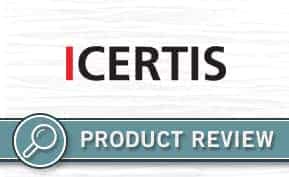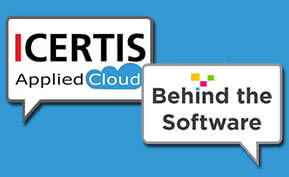Contract Management
5 Tips for a Successful Contract Management Implementation (Part 1)

I’ve been reading a lot of interesting articles lately on the value of contract management—and not just for minimizing risk, but for protecting and growing existing customer revenue.
If you’ve decided to implement a contract lifecycle management (CLM) system in 2013, it’s important to take steps now to ensure system adoption and control project costs—because nothing is worse than implementing a contract management system (or any new system) and having no one use it.
We’ve helped many companies successfully implement contract management solutions over the years, and have compiled a list of common contract management implementation pitfalls. We’ve included these—as well as recommendations for success—in our new guide, “Contract Management Implementation: A Survival Guide.”
Today, I’d like to share 5 recommendations from this guide that will help you get your contract management implementation off to a good start.
Five tips for a successful contract management implementation
1. Include key stakeholders in the CLM system selection process
Because CLM implementation impacts such a large cross-section of core business activities and staff, it’s important to capture all stakeholder’s requirements upfront, and make sure that everyone is on board (most often you’ll need representatives from legal, finance, sales, and sometimes IT).
A good way to secure buy-in is to share a targeted CLM demo with each team, emphasizing the features that will benefit each business unit. For example, if the legal department is struggling to manage their contract requests and approvals, you may show how a CLM product allows members of the company to request contracts without getting legal involved.
2. Reconsider the pilot
As tempting as it is to rely on a pilot to prove the value of CLM, remember that there are some risks to this approach. A pilot can slow the implementation process significantly, and can even raise costs and delay the go-live goal date—defeating the purpose of the pilot all-together. This is why it’s so important to get buy-in from the appropriate stakeholders. If you do this, you can be more secure in the solution you selected and may not feel the same pressure to run a pilot.
If you’ve secured buy-in but still feel the need to “prove things out” (or are being pressured by other stakeholders to do so) you can accomplish the same thing by walking users through a staging environment. This is a less risky and derailing way for users to observe and note any issues or concerns. Additionally, this allows you to optimize the staging environment before rolling the information out for company-wide usage.
3. Work out pain points BEFORE you implement
Too often, people implement a new solution thinking the technology will solve all their process problems. Unfortunately, a contract management solution isn’t a magic wand. If you know that something in your contract management process is broken, it’s worth it to map out a more ideal process before you implement—if only to avoid a protracted timeframe and higher, unnecessary costs.
Bring everyone together who is involved with the contract process, and take some time to work through the gaps. You don’t have to reinvent the wheel, just identify where there are known pain points. This way, even if you don’t solve all of your process issues, you can at least configure your solution to speak to those pain points.
As you work through the issues, document your current process flow along with everyone’s input, and then present this documentation to the contract management implementation team. This will ensure that the functionality within the CLM system will address your unique organization’s concerns.
4. Resist the urge to over-engineer
Remember—just because the system can handle a certain level of complexity, doesn’t mean you should push the limits. At some point, you will begin to impact the user experience.
You may be excited by the idea of highly sophisticated alerts, e-mail notifications, visibility options, and all the other bells and whistles, but if you over-engineer your processes in the beginning, you’ll end up with a never-ending stream of e-mail alerts that users will quickly tune out, or ask to turn off.
This is why it’s very important to stay grounded, and keep alerts you set in alignment with your current signature process. Think of it this way—if someone needed to sign the contract when it was on paper, that same person will need to sign it electronically, and could benefit from an alert. Some companies even choose to only send alerts to system administrators in each department who can review and forward to the proper people if necessary.
5. Remember that garbage in = garbage out
If you have never worked within a contract management system, you may find that your process and naming conventions lack consistency across contracts. This inconsistency could extend all the way from your templates down to specifics like terms, fonts, and pagination. To avoid wasting time, and cluttering up your system, it’s important to standardize as much as you can up front.
A good way to decide what data to include is to look at the information you currently enter into each contract (i.e. parties, dates, amounts, product or service types, etc.) and include these fields into your CLM system. You may also want to consider how you will capture data for reporting considerations—like, how will you keep track of who worked on the contract or who requested the contract? With a contract management system, it’s possible to add fields that will allow you to pull that information immediately.
It may be tempting to skip this step as it presents a deviation from how things have “always been done,” (and could result in some pushback from your teams) but just think of the time you’ll save when you standardize and optimize your documents for each contract lifecycle stage.
Get your contract management implementation off to a good start
To get a more in-depth analysis of the tips listed in this article, check out “Contract Management Implementation: A Survival Guide.” And check back next week, when I will share five more tips for a successful contract management implementation.
Learn more about contract management software by downloading our free Top 10 Contract Management Software comparison report, or browse top contract management platforms and other contract management solutions on our Contract Management resource center page.
[This post originally appeared on Selectica’s blog and is republished with permission.]





